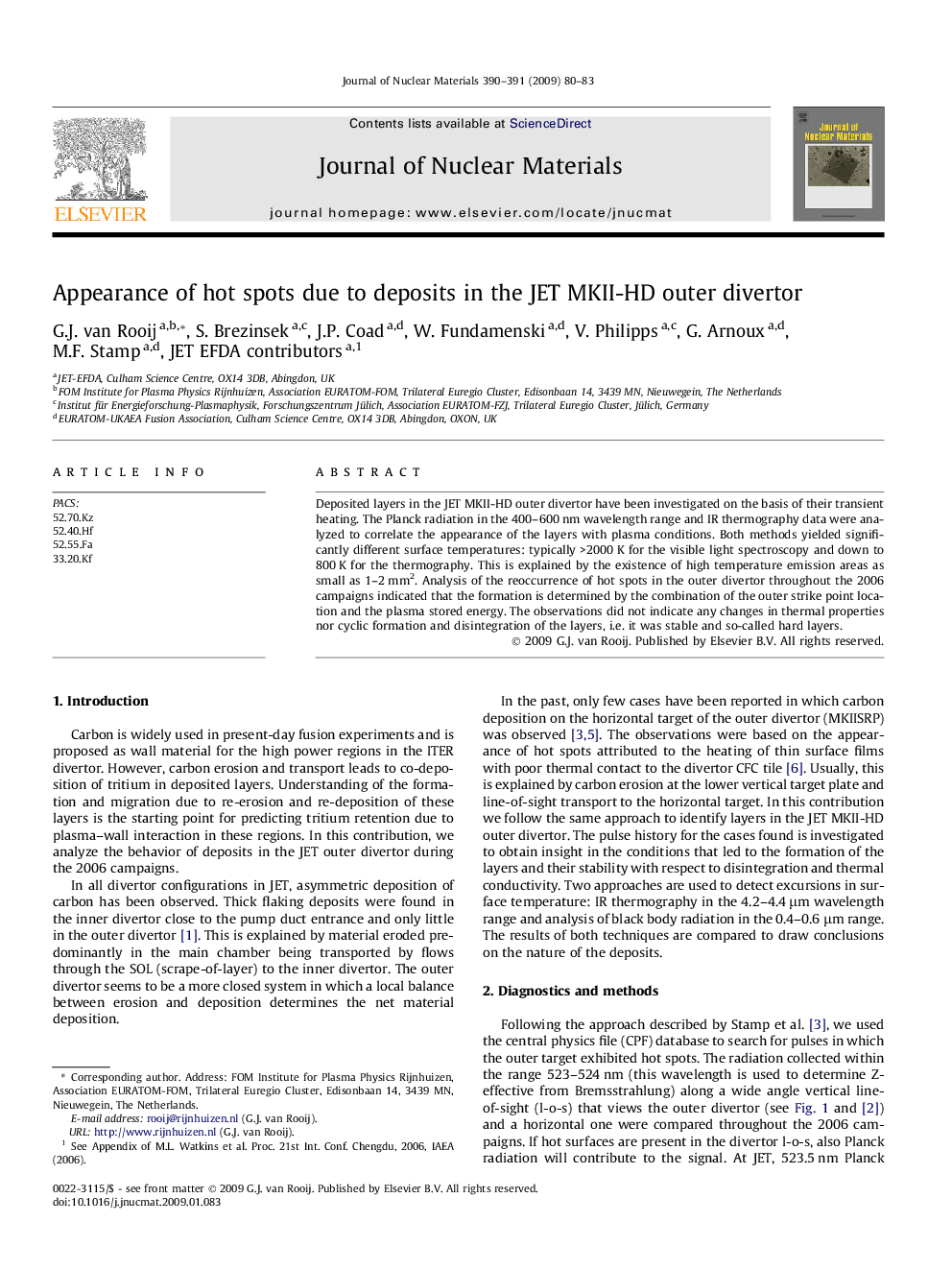| Article ID | Journal | Published Year | Pages | File Type |
|---|---|---|---|---|
| 1567501 | Journal of Nuclear Materials | 2009 | 4 Pages |
Abstract
Deposited layers in the JET MKII-HD outer divertor have been investigated on the basis of their transient heating. The Planck radiation in the 400-600Â nm wavelength range and IR thermography data were analyzed to correlate the appearance of the layers with plasma conditions. Both methods yielded significantly different surface temperatures: typically >2000Â K for the visible light spectroscopy and down to 800Â K for the thermography. This is explained by the existence of high temperature emission areas as small as 1-2Â mm2. Analysis of the reoccurrence of hot spots in the outer divertor throughout the 2006 campaigns indicated that the formation is determined by the combination of the outer strike point location and the plasma stored energy. The observations did not indicate any changes in thermal properties nor cyclic formation and disintegration of the layers, i.e. it was stable and so-called hard layers.
Related Topics
Physical Sciences and Engineering
Energy
Nuclear Energy and Engineering
Authors
G.J. van Rooij, S. Brezinsek, J.P. Coad, W. Fundamenski, V. Philipps, G. Arnoux, M.F. Stamp, JET EFDA contributors JET EFDA contributors,
